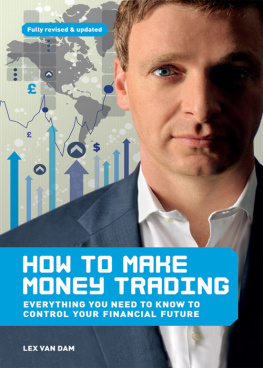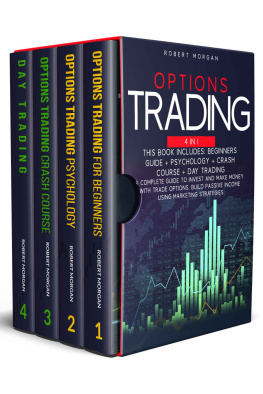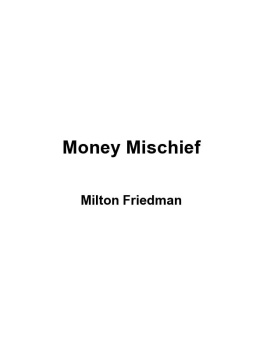Muscas - Guide To Monetary Awareness In Trading: MONEY MANAGEMENT
Here you can read online Muscas - Guide To Monetary Awareness In Trading: MONEY MANAGEMENT full text of the book (entire story) in english for free. Download pdf and epub, get meaning, cover and reviews about this ebook. year: 2020, publisher: UNKNOWN, genre: Romance novel. Description of the work, (preface) as well as reviews are available. Best literature library LitArk.com created for fans of good reading and offers a wide selection of genres:
Romance novel
Science fiction
Adventure
Detective
Science
History
Home and family
Prose
Art
Politics
Computer
Non-fiction
Religion
Business
Children
Humor
Choose a favorite category and find really read worthwhile books. Enjoy immersion in the world of imagination, feel the emotions of the characters or learn something new for yourself, make an fascinating discovery.

- Book:Guide To Monetary Awareness In Trading: MONEY MANAGEMENT
- Author:
- Publisher:UNKNOWN
- Genre:
- Year:2020
- Rating:4 / 5
- Favourites:Add to favourites
- Your mark:
- 80
- 1
- 2
- 3
- 4
- 5
Guide To Monetary Awareness In Trading: MONEY MANAGEMENT: summary, description and annotation
We offer to read an annotation, description, summary or preface (depends on what the author of the book "Guide To Monetary Awareness In Trading: MONEY MANAGEMENT" wrote himself). If you haven't found the necessary information about the book — write in the comments, we will try to find it.
Muscas: author's other books
Who wrote Guide To Monetary Awareness In Trading: MONEY MANAGEMENT? Find out the surname, the name of the author of the book and a list of all author's works by series.
Guide To Monetary Awareness In Trading: MONEY MANAGEMENT — read online for free the complete book (whole text) full work
Below is the text of the book, divided by pages. System saving the place of the last page read, allows you to conveniently read the book "Guide To Monetary Awareness In Trading: MONEY MANAGEMENT" online for free, without having to search again every time where you left off. Put a bookmark, and you can go to the page where you finished reading at any time.
Font size:
Interval:
Bookmark:
belief however, this study shows that the smaller edge of successful traders is not the cause of their failure.
Traders' failures can be explained almost exclusively by their poor money management practices."
Very few indicators are better than a coin toss, and if they are, the edge is eaten up by slippage and commission.
But 'Money Management' tells a trader that (s-)he should concentrate his research on how to optimize capital usage and to view his/her portfolio(-)s as a whole.
They are copied together indiscriminately from several sources from the Internet, from Trading Software, and Trading Literature.
Money Management 1
The best these and ALL other indicators, including Moving averages and Breakouts, will do is make you break-even and at worst blow your account.
Combined with sound risk and money management I could even reverse the above statement: "ANY set of indicators rules will make money in futures trading."
Trading only 1 contract at a time will cause you to FAIL !!!
Make sure you are well capitalized. This is not a game for those who are not.
Maintaining the same number of contracts for each trade will cause you to FAIL. Varying contract size is the MOST important thing you must do, if you want to be successful.
1) Stagger out of your trades when wrong (Phantom of the Pits points out that you should let the market prove you correct instead of letting it prove you wrong by hitting your stop loss).
The market goes against your entry (!!!). BUT hold on to all your positions when right. 2) Make sure your profit goal is larger than your stop loss point.
Never let a winner become a loser. Adjust your stops as the market moves with you. TREND: Use trend following indicators only. I recommend Moving average 2 lines and Break outs.
-----> Pick the shortest time frame with the longest trend indicator.
While Risk management dealt mainly with maximizing profits using contract size, Money management deals mainly with minimizing losses using stops, as well as showing you
when to take profits. They are both very closely intertwined with each other. You cannot have all risk rules but no money management rules, and vice versa. I gave you Rule #1 which says to stagger your stop losses, and here is ONE very important principle that you have to learn in Money management:
Font size:
Interval:
Bookmark:
Similar books «Guide To Monetary Awareness In Trading: MONEY MANAGEMENT»
Look at similar books to Guide To Monetary Awareness In Trading: MONEY MANAGEMENT. We have selected literature similar in name and meaning in the hope of providing readers with more options to find new, interesting, not yet read works.
Discussion, reviews of the book Guide To Monetary Awareness In Trading: MONEY MANAGEMENT and just readers' own opinions. Leave your comments, write what you think about the work, its meaning or the main characters. Specify what exactly you liked and what you didn't like, and why you think so.




